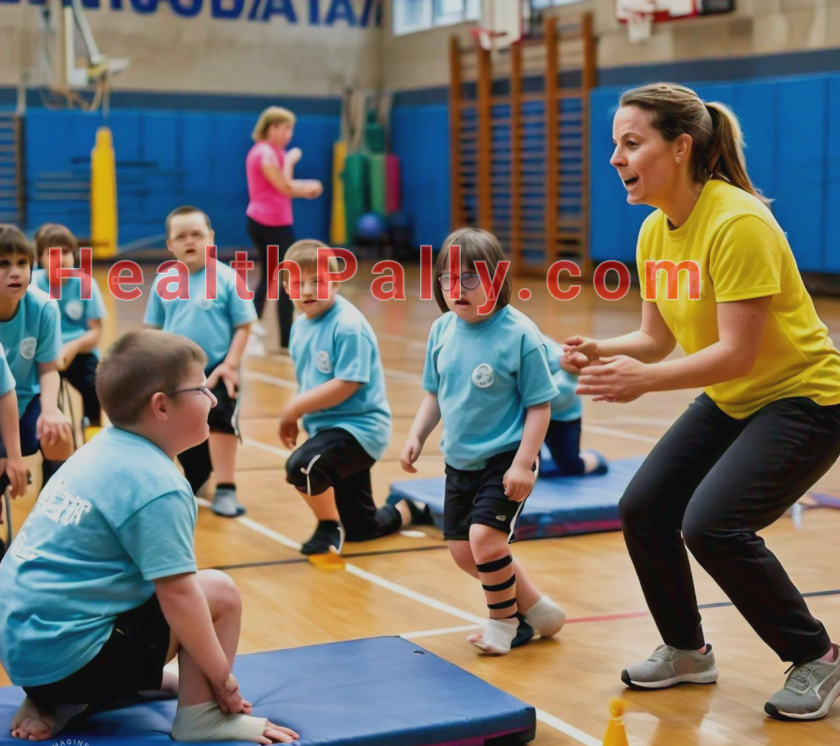Since children and adults who suffer cerebral palsy are always faced with challenges in moving their body, core strengthening exercises are very important to improve their pelvis and trunk.
Foot and leg strengthening exercises, leg and arm braces, and other assisted devices are also very essential to improve their overall wellbeing.
Each person with cerebral palsy has a different ability level, so one specific recommended exercise may be more effective in one than in the other depending on their condition.
Having said that, while planning your short term and long term improvement goals for cerebral palsy patient, home exercise program should not be taken lightly as it can help so much.
The exercises mentioned here may vary across age groups but just as all exercises, frequency and intensity should be adjusted and that would be done if certified fitness expert is in control of setting the program.
Exercise Program for Babies with Cerebral Palsy
For instance, toddlers with CP are in early developmental stages, so they need more of adaptive art supplies, therapeutic toys and games at this level.
Also, physical therapy for them should involve light stretching exercises and game sets which ease their reluctance to move or play.
Essential Exercises for Cerebral Palsy Children
As for children with cerebral palsy, physical therapy can help with growth aspect and improvement in their motor function.
Physiotherapy equipments specifically for cerebral palsy like the mobility devices such as pediatric standing walker with pelvic support, stool scooters, adaptive vehicles help to stimulate the muscles and movement.
When physical exercises and orthotics are combined, the experience becomes fun and it’s easy to improve the physical well being of the children.
Exercise Training for Adults with CP
In adults, however, the primary intention is to boost endurance, strengthen the muscles and joint so that they can carry out day to day activity more efficiently and without the help of others.
Here is a list of exercises for patients with cerebral palsy:
1. Exercising with resistance bands help in increasing muscle strength and endurance with time.
You can start with arm resistance band, move to leg and the full body and repeat.
The muscle strength and endurance increase as the patient with CP increases the repetition of the exercises and make it routine activity.
Nadi Yoga for cerebral is a modified yoga for disabilities and it’s another excellent way to improve muscle strength, but must be done at all time under the supervision of an instructor.
There are different adapted yoga poses that can help improving spastic Diplegia and for other people with special needs.
2. Similar or better results can also be observed by using free weights, weight machines, and arm exerciser, which boost muscle strength.
It is highly advisable that the patient should rest between the exercise days to reduce issues of soreness and fatigue.
3. Cardio requires the raising of heart rate, and a stationary bike or regular bike can be used to achieve that goal.
The exercise should be done for a suitable time duration so that the heartbeat stays at an increased level for some time.
Climbing stairs can achieve the same effects. The limit should be pushed with time to increase the benefits over time.
4. Water exercises, with the help of a fitness trainer, can help improve endurance and cardio.
It is also soothing and fun for young children with CP.
5. Stretching and dance fitness classes like Zumba helps in increasing flexibility at joints and helps in strengthening the bones.
With the help of a fitness instructor, a patient can try out various motion exercises so that every part of the body is involved during the therapy.
6. Water therapy is also good for CP child. For example there are several benefits of swimming for children with cerebral palsy as well as same mind and healthy body individual.
Recreational activity like swimming, throwing and catching a ball on a regular basis helps in developing muscles, balance, and coordination.
Sitting balance, standing balance, stretching exercises all help to reduce spasticity
7. Exercise balls, also called Swiss balls are fun and useful for both children and adults as they help with improving gait and movement along with overall wellness.
8. Patients with some types of CP need special exercises to help with walking, posture, and sensory impairments like touch and balance.
Some light exercise and yoga that emphasize sitting, kneeling and standing help in improving posture.
Fitness experts may use a variety of motion-based activities such as walking, rolling over and sitting up to help infants improve their motor skills.
